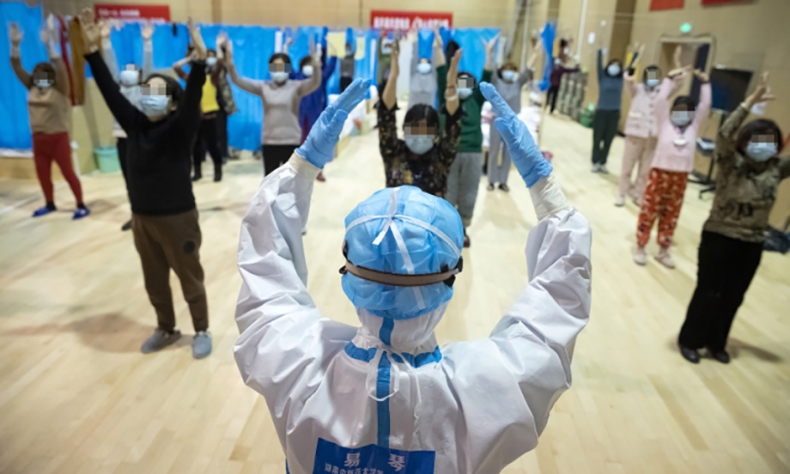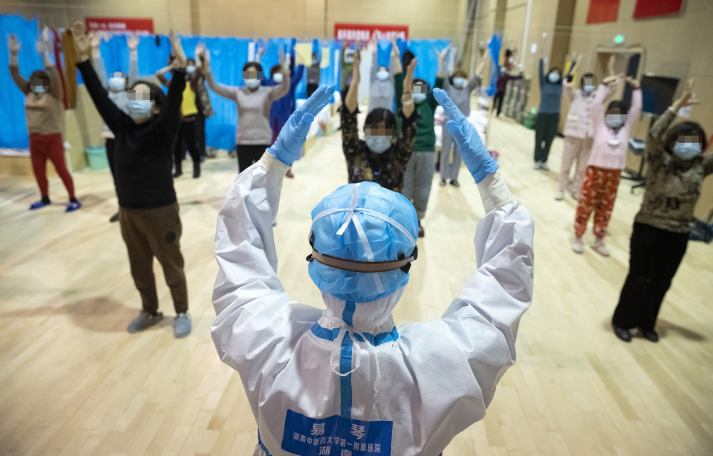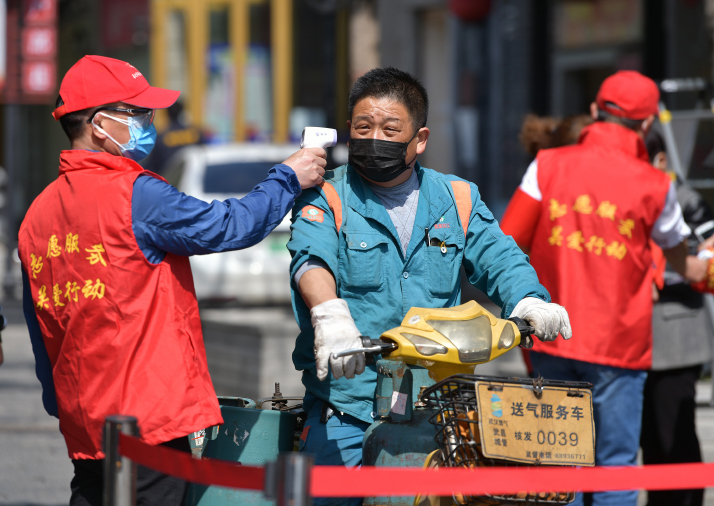Building a Society Where Everyone Contributes and Shares Benefits

It is necessary to strengthen and innovate social governance and improve the social governance system that combines the leadership of the Party, the responsibility of the government, democratic consultation, social coordination, public participation, legal protection and sci-tech support
The Chinese society of 1.4 billion citizens is a large one. How is this society run? The Fourth Plenary Session of the 19th Central Committee of the Communist Party of China (CPC) in October 2019, which made a major decision on how to uphold and improve the system of socialism with Chinese characteristics and advance the modernization of China’s governance system and its capacity, throws light on this.
The committee agreed that social governance is an important aspect of national governance. It is necessary to strengthen and innovate social governance and improve the social governance system that combines the leadership of the Party, the responsibility of the government, democratic consultation, social coordination, public participation, legal protection and sci-tech support.
It is necessary to build a community of social governance in which everyone is responsible, everyone undertakes their due obligations, and everyone enjoys the benefits. It is also necessary to ensure that people live and work in harmony while society remains stable and orderly, and to take the Safe China initiative to a higher level.

The Fengqiao experience
The town of Fengqiao, located in Zhejiang Province in east China, was originally little known. However, it became famous in the 1960s due to the system its residents created to resolve differences among themselves amicably, which became known as the “Fengqiao experience.”
The essence of this method is to have the people engage in discussion, operation and administration of civil affairs, to resolve minor issues through mediation in the village, and to settle larger disputes through town-level mediation. Over the past 60 years, the Fengqiao experience has been promoted across China, forming a grassroots governance model.
For example, Yang Guangming, founder of the mediation center of the Fengqiao police station, is a well-known mediator. Since 2010, he has handled more than 2,100 cases with the help of over 100 volunteers from all walks of life. With their combined efforts, 98 percent of the cases have been successfully mediated and the monetary compensations paid through mediations amounted to 86 million yuan ($12.1 million). This ability to resolve conflicts at the grassroots level and the accumulated experience have enabled China to maintain and guarantee its social security.
To control the novel coronavirus disease (COVID-19), the Chinese Government ordered all workplaces and schools to close till the situation improved. Those in the hardest-hit regions such as Wuhan in Hubei Province in central China had to self-isolate much longer than other parts of the country. The lockdown inevitably led to some emotional distress and outbursts.On March 5, the central steering group overseeing COVID-19 epidemic response in Hubei was greeted with “protests” by some people in Wuhan and a video clip recording their shouts went viral. However, an investigation later showed they were actually protesting against parking fees, which they thought were too high, and leaky roofs, which were not repaired promptly. The shouts were their dissatisfaction with the property management company. They were not throwing a tantrum at the government or community volunteers.
Wu Xiaoqiong, a volunteer in the community, said she could understand the situation. “Anyone can become a little resentful if they are stuck at home for so long. We can’t blame the residents. Instead, we should improve our work and take better care of them,” she said.
Soon after the incident, the district as well as city administrations called on the community’s property management company, community workers and volunteers to address residents’ concerns and the dispute was resolved without further escalation.

Emergency management
In social governance, maintaining public security is the top priority of the government. The 2019 plenary session made careful arrangements for the construction of a national public safety system and mechanism. It had a special emphasis on building an emergency management system with unified command, specialized and regular staff, quick response capability and effective coordination at different levels.
Prior to this, the Central Government reshuffled its departments and established the Ministry of Emergency Management, a new emergency management system with Chinese characteristics.
This top-down public safety management system has made China’s response to major public safety incidents structurally different from those in Western countries. In China, the whole country makes coordinated efforts to ensure that strategies are implemented.
After the COVID-19 outbreak, China’s central and local governments activated the response mechanism for major public health emergencies and established a unified and efficient command system with President Xi Jinping personally directing the fight against the outbreak.
A central leading group was also formed to deal with the epidemic as well as a Joint Prevention and Control Mechanism of the State Council, the cabinet, composed of 32 units. Due to these efforts, China was able to control the outbreak domestically in two months.
Tedros Adhanom Ghebreyesus, Director General of the World Health Organization, praised the quick action on a scale rarely seen in the world, which demonstrated the advantage of China’s system. He also said other countries should learn from China’s experience in fighting the outbreak.
Grassroots services
The plenary session also proposed that the focus of social governance and services be shifted to the grassroots level so that more people, materials, funds, and other resources could be concentrated on the frontline of an emergency and primary-level social organizations could provide more targeted and customized services to the public.
On January 23, Wuhan was put on a lockdown to curb the spread of the disease. This was the first time in human history that a megacity with a population of over 11 million had been isolated because of an epidemic.
All markets were closed in Wuhan, the residential communities were strictly managed and people were quarantined at home. In these circumstances, how was the supply of basic living materials ensured? The answer lies in the work of grassroots community organizations, which helped people purchase food, water and other necessities, and helped maintain social order and stability.
On March 10, during his inspection tour in Wuhan, Xi visited a residential community and praised community workers and volunteers for their hard work and contribution. For more than a month, they had tirelessly provided door-to-door services, helping the residents deal with problems and offering them psychological counseling.
Another valuable experience in China’s prevention and control of COVID-19 was the establishment of temporary hospitals to receive confirmed patients with mild symptoms and separate them from uninfected people. Eleven temporary hospitals were built in Wuhan, providing about 10,000 beds. These became big families for patients. Within the temporary treatment centers, patients with mild symptoms assisted in the treatment of other patients and the management of the centers. Medical staff held birthday parties for the patients and danced with them. Those efforts not only cured the disease but also warmed hearts.
 Facebook
Facebook
 Twitter
Twitter
 Linkedin
Linkedin
 Google +
Google +










